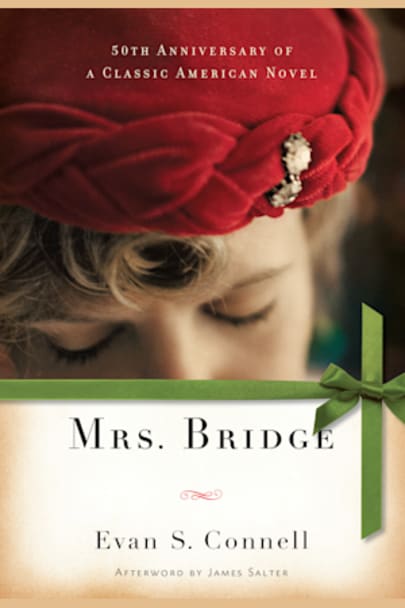“Again and again. . . I find myself being a Mrs. Bridge evangelist, telling them that it’s a perfect novel, and then pressing copies on them. . . What writing! Economical, piquant, beautiful, true.” —Meg Wolitzer, The New York TimesIn Mrs. Bridge, Evan S. Connell, a consummate storyteller, artfully crafts a portrait using the finest of details in everyday events and confrontations. The novel is … events and confrontations. The novel is comprised of vignettes, images, fragments of conversations, events—all building powerfully toward the completed group portrait of a family, closely knit on the surface but deeply divided by loneliness, boredom, misunderstandings, isolation, sexual longing, and terminal isolation. In this special fiftieth anniversary edition, we are reminded once again why Mrs. Bridge has been hailed by readers and critics alike as one of the greatest novels in American literature.
more



WOW. I picked this up after Meg Wolitzer recommended it in the New York Times, and it’s incredible. A sweet, wistful, sometimes sad novel that is also a sharp social commentary. It reminded me of a few women in my own family, and it will certainly get you talking about the WWII generation. There’s a sequel, Mr. Bridge, which you’ll want to pick up if you enjoy this one.
For students of novel structure, this book is a must-read because it’s one of the best episodics around. Meaning that it isn’t really made out of chapters like a traditional novel but instead consists of 117 brief episodes or incidents taking place over the course of the hero’s entire life. When this is done well, as it is here, we feel we are living the hero’s life along with her, as the years and the decades pass. It’s hopefully not giving too much away to say that this is a modern tragedy, a quiet one, and it mostly takes place in one of the nicer houses in suburban Kansas City, Missouri from the 1930s to 1950s. Normally, a tragedy requires the death of the hero in order to qualify, but Mrs Bridge is (spoiler alert) actually still alive on the book’s last page. It’s a drama of consciousness which means that the really big events that happen in the book happen almost entirely within Mrs. Bridge herself as she makes a series of difficult discoveries about herself and her life and the people she loves. One thing that all tragic heroes share is, they all have some fatal hold on some noble ideal, one that will end up killing them. In almost every case, the noble ideal is flawed in some way. It contains an error in logic the hero is incapable of seeing or incapable of giving up. This leads to the double-bind of tragedy in which the hero is forced to choose between the lesser of two evil outcomes, and this requires a judgement call on the hero’s part and tests whether she is capable of distinguishing between degrees of evil. The book is also a study of one huge downfall of the leisure class. Mrs Bridge — with an exotic first name she doesn’t like — India — has been carefully raised to know as little about how the world runs as possible. This means she learns most important lessons too late in life to change the path she’s on. She blunders into situations in total ignorance and can’t benefit from most of what she reads because she hasn’t been provided with context i.e. education. The noble ideal she clings to throughout her life is reliability and stability. She doesn’t rock the boat. Though it’s not because she believes in it — it’s because her culture never taught her to swim.
This book is not linear in form. Rather, each chapter is a vignette. Mrs. Bridge is a matron in 1940’s/1950’s Kansas City. After its success, the author went on to write Mr. Bridge which is a slimmer volume. Paul Newman and Joanne Woodward then went on to star as Mr. and Mrs. Bridge in the film by the same name. The author has an astute eye for the eccentricities of the human condition.